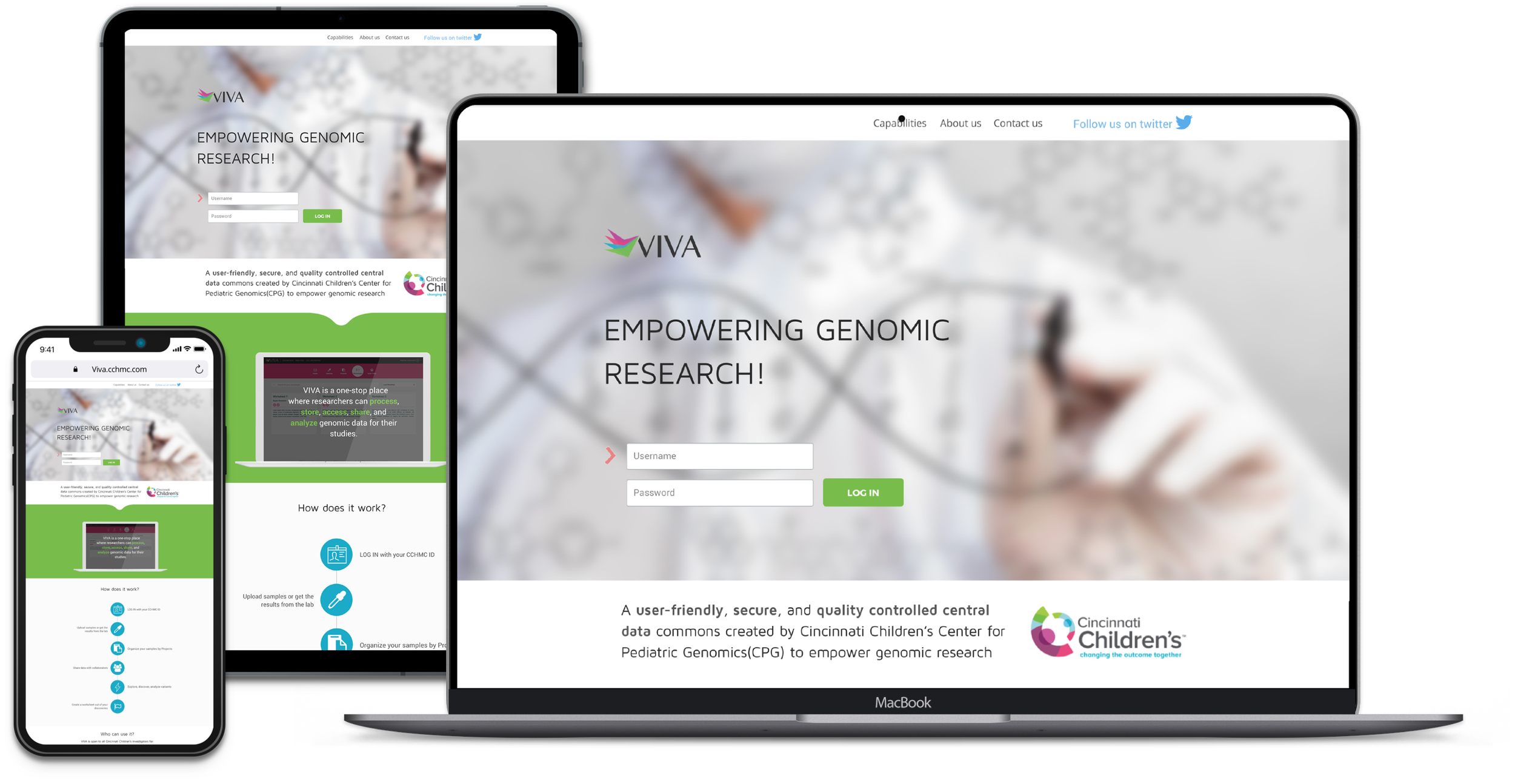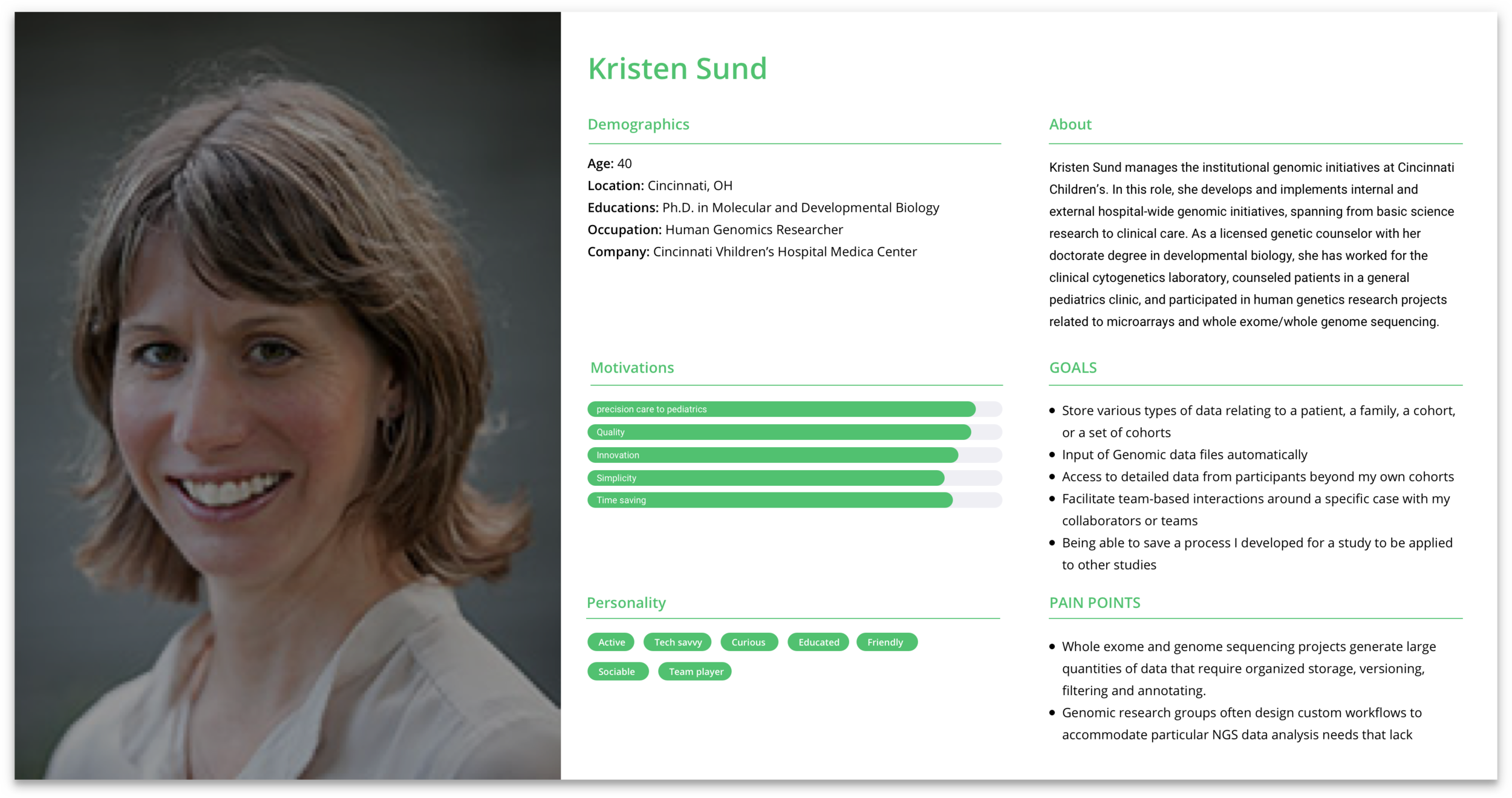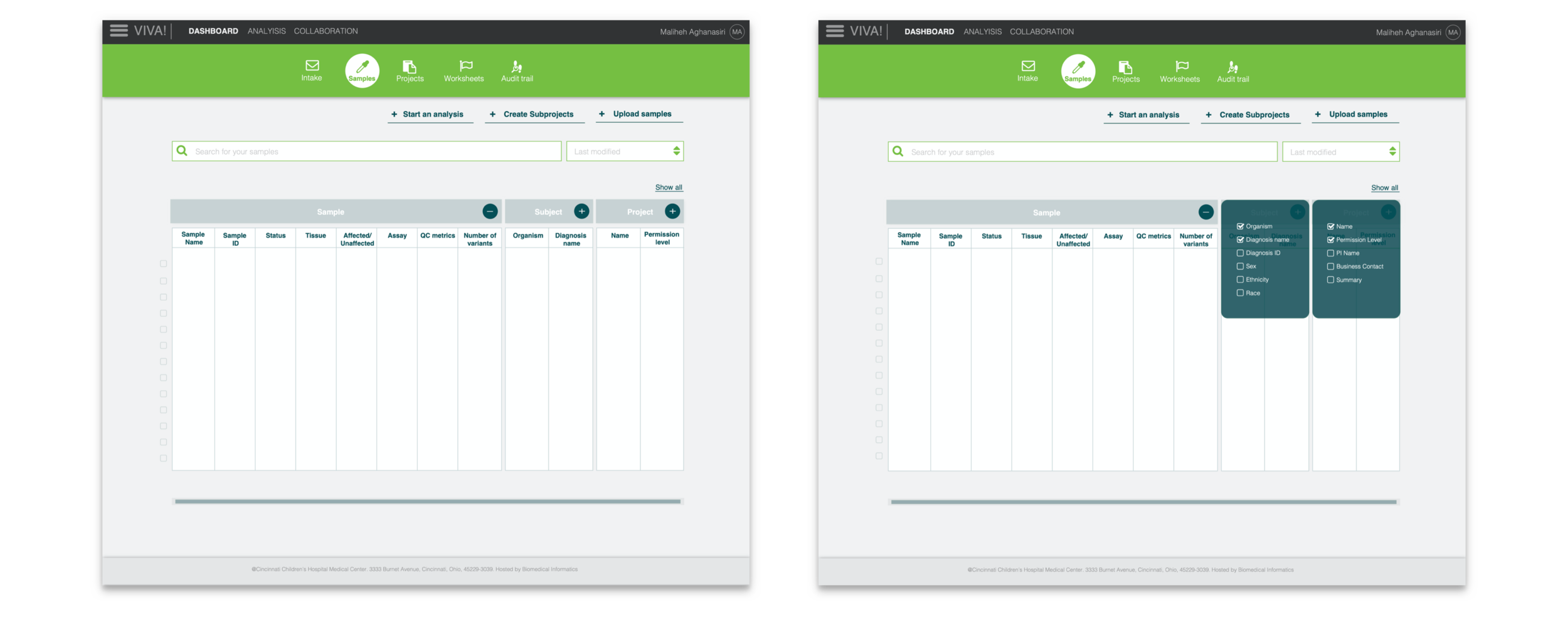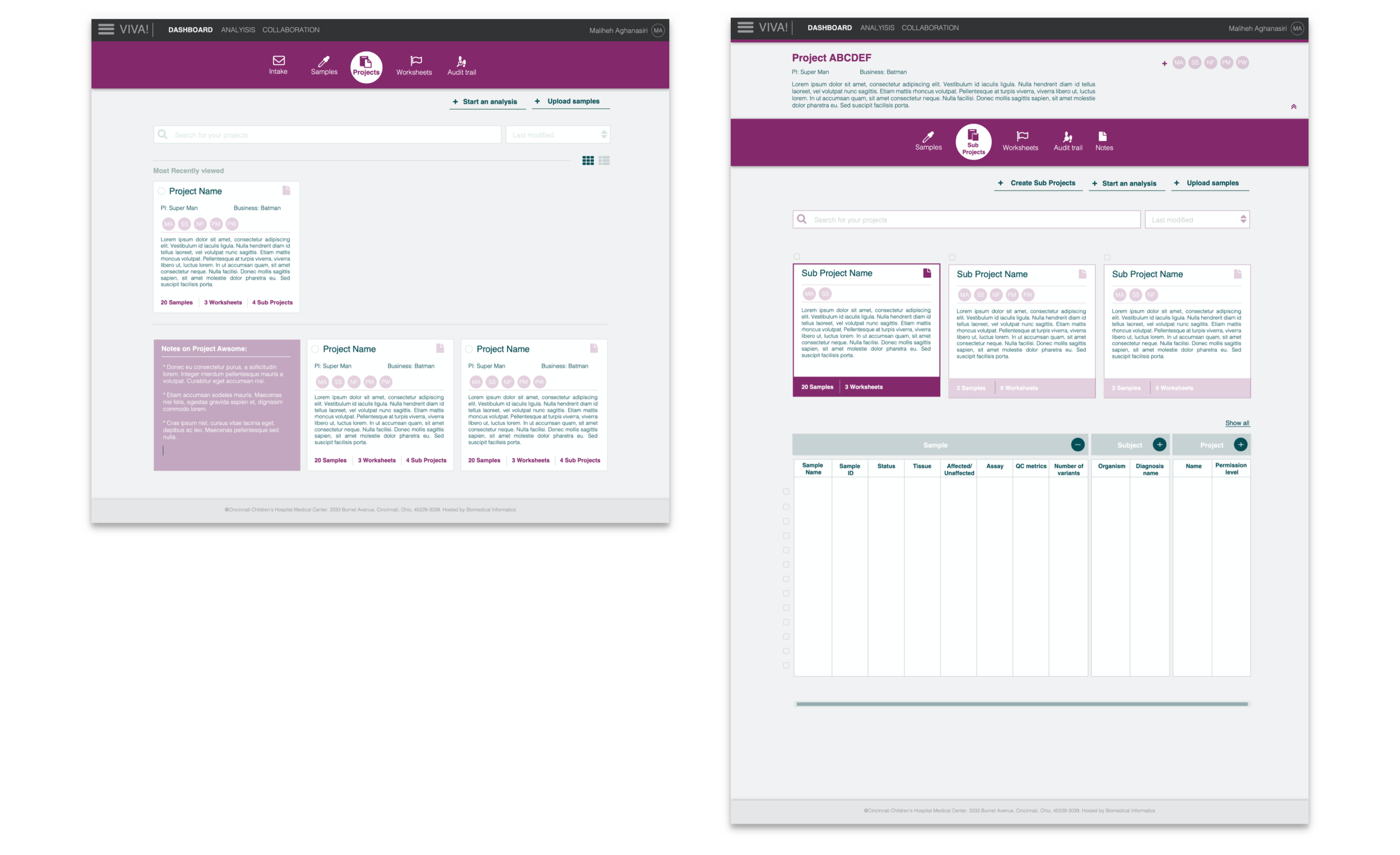Role: Lead Product Designer
Company: Cincinnati Children’s Hospital
Duration: Sep 2016 - Oct 2017
VIVA
Viva, a comprehensive genomic data management platform for Cincinnati Children's Hospital that transforms complex genetic research workflows into streamlined digital processes. This enterprise solution accelerates scientific discovery by integrating sample management, data processing, and analysis tools while enabling secure collaboration across research teams and grant-funded projects.
My individual contribution
Led end-to-end product design as the sole designer, partnering with product management to shape strategy and working closely with engineering teams to ensure precise implementation. Drove all design activities from initial research through final development, balancing user needs, technical constraints, and business objectives while maintaining overal design integrity.
Our process
01. Research
Stakeholder Interviews
Led comprehensive user research through interviews, card sorting, and affinity mapping and synthesized findings to:
Define core user needs
Identify critical pain points
Establish intuitive information architecture
Guide initial product structure
Establishing user personas
Translated comprehensive interview data from genomic researchers into actionable personas. Mapped core user characteristics, their research objectives, and workflow challenges, guiding design decisions to optimize scientific productivity.
02. Information Architecture
Information Architecture
Orchestrated information architecture development using evidence-based methodologies. Combined card sorting insights with strategic site mapping to create an intuitive navigation system that aligned with researchers' mental models and accelerated access to critical genomic data.
03. Interaction Deign & Wireframing
Wireframing
Used Sketch to design artifacts and wireframes to validate and communicate solutions, which enabled early user validation while facilitating clear communication of design concepts across teams.
Prototyping
Leveraged InVision to create interactive prototypes that simulated key research workflows, enabling thorough user testing and rapid iteration of design solutions. This approach facilitated efficient validation of complex genomic data interactions.
04. Usability Testing
Usability testing
Led comprehensive user testing program to validate design solutions:
Designed and executed targeted testing sessions
Analyzed qualitative and quantitative feedback
Synthesized findings into actionable insights
Translated results into prioritized user stories
Guided data-driven sprint planning
This systematic approach ensured development priorities aligned with researcher needs and product goals.
Design iterations
Drove iterative design improvements through systematic analysis of:
User research insights
Stakeholder feedback sessions
Testing observations
Usage patterns
This data-driven approach ensured continuous refinement of both user experience and interface design while maintaining alignment with research workflows.






















